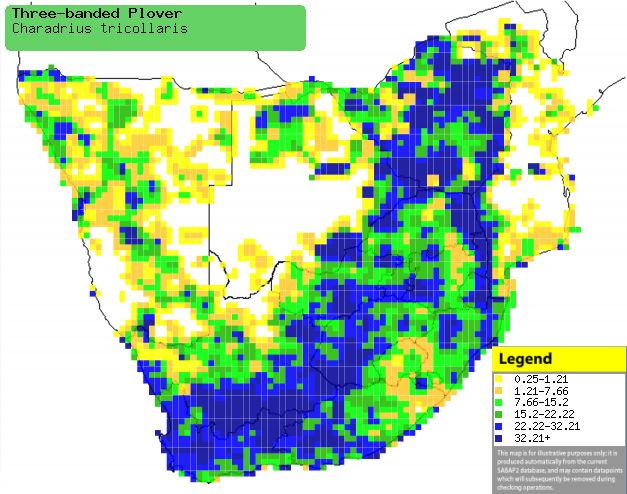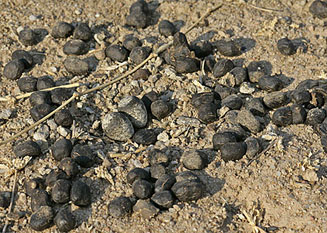|
Charadrius tricollaris
(Three-banded plover)
Driebandstrandkiewiet [Afrikaans]; Inqatha, Unokrekre
[Xhosa]; Patapeta-nala [South Sotho]; N'wantshekutsheku, Xitsekutseku
[Tsonga]; Driebandplevier [Dutch]; Pluvier à triple collier [French];
Dreiband-regenpfeifer [German]; Borrelho-de-três-golas [Portuguese]
Life
> Eukaryotes >
Opisthokonta
> Metazoa (animals) >
Bilateria >
Deuterostomia > Chordata >
Craniata > Vertebrata (vertebrates) > Gnathostomata (jawed
vertebrates) > Teleostomi (teleost fish) > Osteichthyes (bony fish) > Class:
Sarcopterygii (lobe-finned
fish) > Stegocephalia (terrestrial
vertebrates) > Tetrapoda
(four-legged vertebrates) > Reptiliomorpha > Amniota >
Reptilia (reptiles) >
Romeriida > Diapsida > Archosauromorpha > Archosauria >
Dinosauria
(dinosaurs) > Saurischia > Theropoda (bipedal predatory dinosaurs) >
Coelurosauria > Maniraptora > Aves
(birds) >
Order: Charadriiformes > Family: Charadriidae
> Genus: Charadrius
Distribution and habitat
Occurs in Madagascar and sub-Saharan Africa, in Nigeria as
well as in the area from Ethiopia south through Uganda, Tanzania, southern DRC,
Zambia and Angola to southern Africa. Within southern Africa it is common across much of the
region, largely excluding arid south-central Botswana, generally preferring
open shores of any freshwater habitat, such as pools, streams, seeps, farm dams
and sewage works.
|
 |
|
Distribution of Three-banded plover in southern Africa,
based on statistical smoothing of the records from first SA Bird Atlas
Project (©
Animal Demography unit, University of
Cape Town; smoothing by Birgit Erni and Francesca Little). Colours range
from dark blue (most common) through to yellow (least common).
See here for the latest distribution
from the SABAP2. |
Movements and migrations
Little known, although often moving away on the
onset of seasonal rainfall at Zambia and Zimbabwe, while it travels
away from arid areas at the beginning of the dry season.
Food
It mainly eats invertebrates (both terrestrial and
aquatic), doing most of its foraging on open shores using the typical plover
technique, running, stopping and searching for prey then repeating the process. The following food items have been recorded
in its diet:
- Invertebrates
- insects
- crustaceans
- small molluscs
- worms
Breeding
- Monogamous, territorial solitary nester, defending its territory by
running or flying at intruders, which can be another Three-banded plover or
a
different species.
- The nest (see image below) is a simple scrape in sand, shingle or dry
mud, often lined with dried bits of material, dried mud or pebbles and
typically placed close to the water.
 |
|
|
Three banded plover clutch (pictured in centre,
camouflaged by the surrounding rocks), Nylsvley area, South Africa. [photo Warwick Tarboton ©] |
|
- Egg-laying season is almost year-round, often peaking from July-December.
- It lays 1-2 eggs, which are incubated by both sexes for about 26-28
days, as the male defends the territory by day while the female incubates,
then switching places at night so that the female can feed.
- The chicks are brooded frequently at first, taking their first
flight at about 21-22 days old and can fly strongly 9-10 days later. They
may remain with their parents up to about 40-42 days old.
Threats
Not threatened, in fact it is generally tolerant of
disturbance, and has benefited from the construction of artificial water bodies.
References
-
Hockey PAR, Dean WRJ and Ryan PG 2005. Roberts
- Birds of southern Africa, VIIth ed. The Trustees of the John Voelcker
Bird Book Fund, Cape Town.
|
